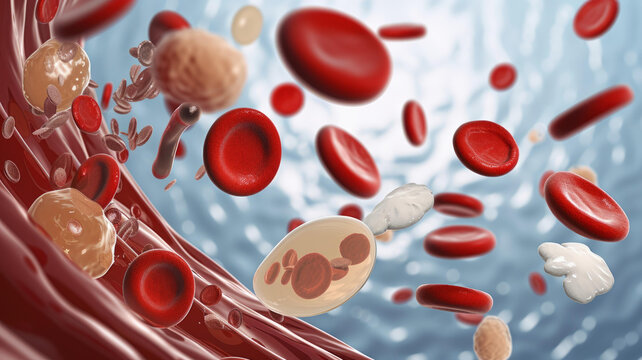Understanding Blood Clots: Causes, Risks, and Prevention
A blood clot is a solidified mass of blood. Coagulation is the body’s natural response to blood leakage from damaged blood vessels. However, if a blood clot forms within a blood vessel, it can be harmful, obstructing blood flow. This condition is called thrombosis.
Types of Blood Clots
- Arterial Clots: A blood clot blocking a coronary artery can cause a heart attack, while blocking a cerebral artery can cause a stroke. Similarly, clots in renal, mesenteric, or other arteries can damage corresponding tissues, leading to loss of function.
- Venous Clots: Blood clots can also form within veins. If a clot forms and a vein infection occurs, it is called thromboembolic phlebitis, which can affect both deep and superficial veins, causing local pain, tenderness, and swelling.
- Embolism: When a blood clot detaches and travels through the bloodstream to block a blood vessel elsewhere, it is called an embolus. Emboli can also consist of fat, cancer cells, bacteria, or air. Sudden blockage of pulmonary, coronary, cerebral, or renal arteries by an embolus can be life-threatening.
Causes and Risk Factors
Blood clots typically do not form in healthy blood vessels. However, certain conditions and behaviors increase the risk:
- Medical Conditions:
- Arteriosclerosis
- Atherosclerosis
- Varicose veins
- Slow blood flow
- Damaged blood vessel walls
- Lifestyle Factors:
- Smoking
- Prolonged bed rest
- Long-term use of birth control
Treatment Options
Treatment for blood clots depends on their location and severity:
- Medications:
- Thrombolytic drugs: Help dissolve existing clots.
- Anticoagulants: Reduce blood viscosity to prevent new clots from forming.
- Surgical Procedures:
- Clot removal
- Bypass surgery for blocked blood vessels
Prevention Strategies
For individuals at risk of blood clots, prevention is key. Strategies include:
- Lifestyle Modifications:
- Quit smoking.
- Stay physically active to promote healthy blood flow.
- Avoid prolonged periods of immobility.
- Medical Interventions:
- Regular check-ups for conditions like atherosclerosis.
- Use of compression stockings for varicose veins.
- Adherence to prescribed anticoagulant therapy, if recommended.
By understanding the causes, risks, and prevention strategies, individuals can take proactive steps to reduce their risk of blood clots and maintain cardiovascular health.







